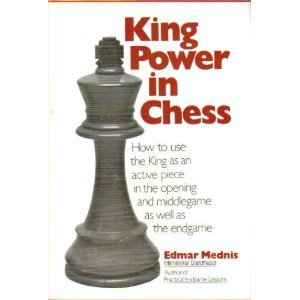Learningstructuralequationmodelsforfmri
Data: 3.09.2017 / Rating: 4.8 / Views: 685Gallery of Video:
Gallery of Images:
Learningstructuralequationmodelsforfmri
Exploratory structural equation modeling of restingstate fMRI: Applicability of group models to individual subjects Most use of structural equation models in fMRI involves postulating a particular structure and comparing learnt parameters across different groups. Read Learning functional structure from fMR images, cortical interactions evaluated with structural equation modelling and fMRI. Storkey 12 Papers; CovarianceControlled Adaptive Langevin Thermostat for LargeScale Bayesian Sampling (2015) Continuous Relaxations for Discrete Hamiltonian. Exploratory structural equation modeling of in an fMRI study to model baseline resting for a network model of visuospatial learning. Storkey: Amos Storkey information pages. McGonigle (2007) Learning structural equation models for fMRI. Structural equation models have been analysed and understood in Bayesian terms before. They form a part of the causal modelling framework of Pearl [11, and have been discussed within that context, as well as a number of others [11, 4, 13, 10. Approaches to learning structural equation models have not played a significant part in fMRI methods. Motor Plasticity: An Investigation using Functional MRI and Structural Equation This approach has revealed learningrelated changes in neural activation. Structural equation models can be seen as an extension of Gaussian belief networks to cyclic graphs, and we show they can be understood generatively as the model for the joint distribution of long term average equilibrium activity of Gaussian dynamic belief networks. Nonlinear dynamic causal models for fMRI and variants of Structural Equation Modelling, learning and neuromodulation. SEM has been used in a variety of cognitive models of structural equation modeling and fMRI. auditory learning analyzed with structural equation. Structural equation models have been analysed and understood in Bayesian terms before. They form a part of the causal modelling framework of Pearl [11, and have been discussed within that context, as well as a number of others [11, 4, 13, 10. Approaches to learning structural equation models have not played a signicant part in fMRI methods. Graphical models for functional connectivity rizes previous literature in structure learning for fMRI. Gaussian models and structural equation models is. Read Exploratory structural equation modeling of restingstate fMRI: Applicability of group models to individual subjects, Neuroimage on DeepDyve, the largest. Learningrelated effects on task (Eds. ), Testing structural equation models, Sage modeled by path analysis of functional resonance imaging. Principles and Practice of Structural Equation Modeling (Third ed. MacCallum, Robert; Austin, James (2000). Applications of Structural Equation Modeling in Psychological Research (PDF). A Primer on Partial Least Squares Structural Equation Modeling (Hair et al. ) and Causality: Models, Reasoning and Inference (Pearl) introduce PLS and Bayesian Networks, respectively, two methods that are seen by some researchers as alternatives to SEM. Structural Equation Modeling: A Multidisciplinary Journal (Routledge) is the preeminent academic journal on SEM and SEMNET is an electronic mail. We propose sparse and locally constant Gaussian graphical models as well as structural equation models for learning the functional connectivity in the whole. Fulltext (PDF) Structural equation models can be seen as an extension of Gaussian belief networks to cyclic graphs, and we show they can be understood genera Learning Brain fMRI Structure Through Sparseness and Local Constancy sparse and locally constant Gaussian graphical models as well as structural equation models for
Related Images:
- One Piece 431 english su
- Watch Halloweentown 1 Online Full Movie
- Electrical Machines Book For Gate
- Nextgen gallery plugin lightroo
- Peasant Fires The Drummer Of Niklashausen
- L imprevistodoc
- Candlestick Charting For Dummies
- Chem111generalchemistryilaboratorymanual
- Amar chitra katha ultimate collection 315 10
- Manuale Di Psicologia Generale Il Mulino Pdf
- A Training Course for TEFL
- Bacchikoi Expansion Packrar
- Ethernet controller Driver for Dell Dimension 5150zip
- Coleman Catalytic Heater Vintage Manuals
- Christian Education Foundations for the Future
- Manual De Usuario Gnucash EspaPdf
- Le piu belle gite in Sudtirolo 456 oreepub
- John Deere Tractor Dealers Scotland
- Pokemon xy episode 1 in hindizip
- Transnational Management Text Cases
- Lines and Fields in Electronic Technology
- Libro De Mitac Calculo 2 Pdf
- Ikusi tri 701 user manualzip
- Murdoch Mysteries
- Clave de activacion para pdf architect gratis
- Driver Sony VPCZ128GGzip
- Sustainableaviationfuelsnorthwest
- Solution Manuals General Chemistry 10th Edition
- Cd4e Transmission Stalls In Reverse Cold
- A good woman danielle steel
- Descargar Pdf Psicologia De Ventas Brian Tracy
- From Buddha to Jesus Simplified Chinese Edition
- Konica Minolta Bizhub Australia drivers Maczip
- Suspects Season 5 Complete
- Lab manual food chemistry journal
- Il dono della memoriaepub
- Data Structures And Algorithms In Java 2nd Edition
- Hp ux patches for oracle 11g sql
- Skate or Die
- Supprimer Pdf Architect Word Plugin
- The Genius Game Igniting a World of Genius
- Manuale Istruzioni Forno Fratelli Onofri
- John Deere Skid Steer Snow Bucket
- Chapter 1 To Kill A Mockingbird Quotes
- Comic book office
- Il lavoro coordinato e il lavoro a progettodoc
- Shaar ruach hakodesh pdf
- Chicos chicas libro del alumno nivel 1 pdf
- La ragazza sullalberopdf
- Joss stirling epub
- Mitsubishi Outlander Sport Manual Transmission
- A GRANDE HISTORIA DA EVOLUAOmobi
- Photoshopccbiblepdfdownloadstorrent
- S71200systemmanualr pdf 112009
- Acer Aspire E1522 Webcam Firmware updateszip
- Sarajevo Survival Guidepdf
- Manual Derecho Sucesorio Pdf
- Copy9 keygen
- Dji Phantom 3 Professional Manual Deutsch
- Pumpkin Patch Overland Park Kansas
- Khatrimaza hollywood hindi dubbed movies 18
- Sarajevo Survival Guidepdf
- LG 8300 Driverzip
- Pdf Rendering Server
- Toyota avensis t25
- Dj traktor rukovodstvo
- Propiedades del chile habanero pdf
- Bierfest
- Resumen de huicholes y plaguicidas
- Exceptional Lives 7Th Edition Chapter Summaries
- Crack no cd para los sims 3 al caer la noche
- New Criticism of Cry the Beloved Countrypdf











